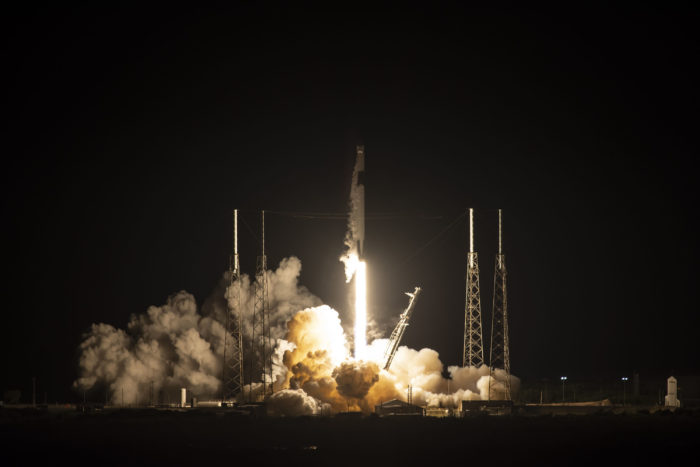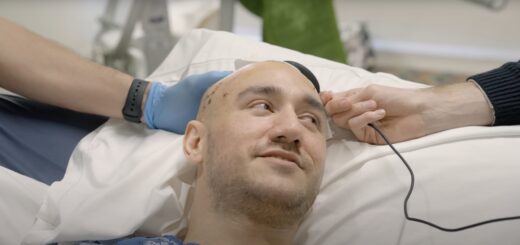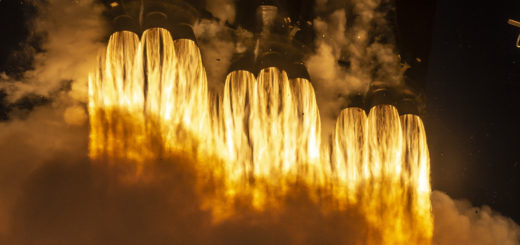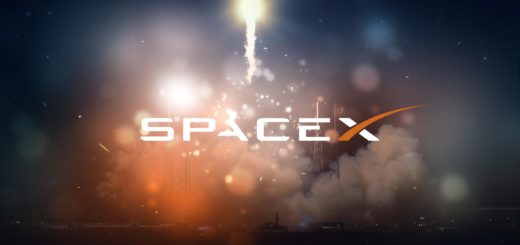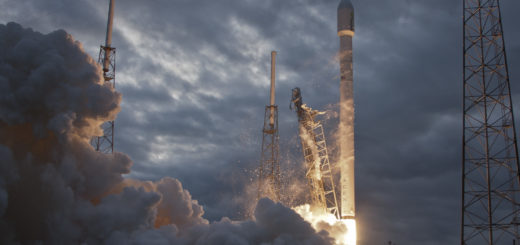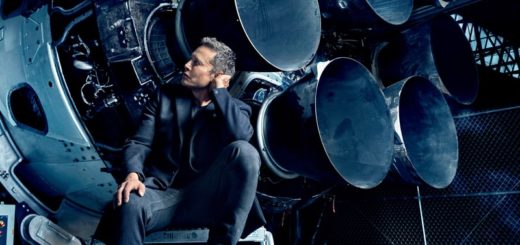NASA Will Soon Use Dragons and Falcon 9 Boosters That Had Flown Twice Already
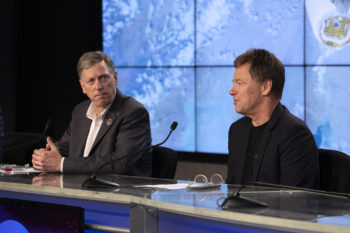
Kenny Todd of NASA and Hans Koenigsmann of SpaceX at the CRS-17 post-launch press conference (Credit: NASA)
On Saturday, Falcon 9 successfully launched a reused Dragon capsule to the ISS as part of the CRS-17 mission for NASA. The Falcon 9’s first stage then successfully landed on the droneship Of Course I Still Love You (OCISLY) and we could watch the landing live through the eye of an infrared camera (see video below).
This was the fifth SpaceX launch this year, 70th Falcon 9 launch overall and 39th successful booster landing. At a press conference that followed, we learned more about the problems that caused the delay on Friday, as well as NASA’s plans for Falcon and Dragon reuse. It turns out that by the end of the year, we might see CRS missions that will fly Falcons and Dragons that had been used twice before.
NASA’s Kenny Todd, ISS Operations and Integration Manager, was present at the post-launch conference along with SpaceX’s Hans Koenigsmann, Vice President of Build and Flight Reliability. First, they shared the planned schedule for the rest of the CRS-17 mission (times UTC):
- Dragon will rendez-vous with the ISS on May 6, 9:30
- On the same day, Dragon will be captured by the robotic Canadarm2 around 11:00 UTC and berthed at 13:00
- Dragon will spend about 4 weeks on ISS and is schedule to return to Earth on June 3
We also learned more details about the problems that led to the postponement of the Friday launch. There was an issue with leaking helium on the side of ground support equipment but it was said during the conference that the issue probably wouldn’t have led to an abort. The main reason for the scrub on Friday was a power generator failure on OCISLY.
Hans Koenigsmann of SpaceX said that there was a backup generator on board but it was also not functioning. Therefore, NASA and SpaceX decided to postpone the launch by a day so that OCISLY could return to port and replace the generators. Fortunately, the droneship was positioned only 20 km from the coast, so it took only about 16 hours to return to port, replace the generators and get back to the landing zone.
Interestingly, when there was a situation in the past with weather preventing booster recovery (for example during DSCOVR and Hispasat 30W-6 missions), the customer usually had priority and instead of postponing the launch, the booster simply wasn’t recovered. Perhaps we’re seeing a slow shift towards booster recovery playing a greater role when SpaceX is deciding whether to push a launch or not?
NASA’s Kenny Todd then said that the agency had “vested interest” in this particular booster, which played a role in the decision to postpone the CRS-17 launch to Saturday. The booster B1056 was brand new and apparently NASA is planning to reuse it later this year on the CRS-18 mission. NASA reusing Falcon 9 boosters isn’t anything new, the agency started using “flight-proven” rockets in December 2017. But Kenny Todd added that B1056 might also fly on CRS-19.
If that happens (and it’s not certain, Todd said), it would be the first time a NASA mission would fly its payload on a rocket that’s already been used twice. CRS-19 is currently scheduled for December which means that SpaceX should have, by then, at least one booster in its fleet that flew four times. The reason is that Starlink-1 mission is scheduled for May and is reportedly going to use booster B1046 which has flown on three different missions already.
SpaceX also reuses Dragon capsules. The CRS-17 mission on Saturday used a Dragon from CRS-12 which actually represented the fastest capsule turnaround so far (628 days between launches). Dragon reuse is not unusual nowadays as this was the sixth mission with a reused capsule (all CRS mission since December 2017 utilized reused Dragons). However, SpaceX stopped manufacturing new Dragon capsules in August 2017 which led one of the journalists attending the press conference to ask if SpaceX was planning to use a Dragon for the third time before the first phase of the CRS contract is over. The first phase will end with the CRS-20 mission and starting with CRS-21, SpaceX will switch to Cargo Dragon 2 based on the more advanced Crew Dragon capsule.
Hans Koenigsmann confirmed that some of the current Cargo Dragons will be used for the third time, but did not go into details. However, looking at the list of available Dragon capsules tells us that the next CRS mission will probably have to use a Dragon that had been used twice already. All Dragons starting with the one from CRS-4 have already been used twice with the exception of the CRS-5 Dragon, which was used only once for an unknown reason. Older Dragons from 2010–2014 were also used only once, possibly because they used an older capsule design that was not easily reusable. My guess is that SpaceX chose three Dragons from the ones available that are in the best condition and those will be reused for the third time on CRS-18, 19, and 20.



